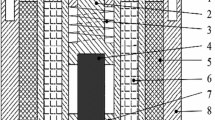Abstract
A variable magnetization (VM) motor by incorporating magnets that can be flexibly configured with variable magnetization process is proposed to meet the emerging requirements on motor efficiency and actuator compliance in robotic applications. A generalized spin torque model is established which provides a relationship between the motor torque and two different types of motor inputs, the current inputs and the magnet magnetizations. A variable magnetization process is proposed based on the study of the hysteresis properties of the magnetic materials and the design criteria for implementing the variable magnetization process with current pulses are established. The feasibility of the variable magnetization is validated with experimental data and the motor functions and performances are numerically demonstrated and evaluated. The results show that the VM motor can maintain high efficiency by switching between two actuation modes. Controllable stiffness at different equilibria can be also achieved with the VM motor with instantaneous magnetizing current pulses.
Similar content being viewed by others
References
Albu-Schaffer A, Eiberger O, Grebenstein M, et al. Soft robotics. IEEE Robotic Autom Mag, 2008, 15: 20–30
Ding H, Yang X, Zheng N, et al. Tri-Co robot: A Chinese robotic research initiative for enhanced robot interaction capabilities. Natl Sci Rev, 2017, 485: 148
Carmichael M G, Liu D K. Estimating physical assistance need using a musculoskeletal model. IEEE Trans Biomed Eng, 2013, 60: 1912–1919
Hsieh H C, Chen D F, Chien L, et al. Design of a parallel actuated exoskeleton for adaptive and safe robotic shoulder rehabilitation. IEEE/ASME Trans Mechatron, 2017, 22: 2034–2045
Katsura S, Matsumoto Y, Ohnishi K. Modeling of force sensing and validation of disturbance observer for force control. IEEE Trans Ind Electron, 2007, 54: 530–538
Ham R, Sugar T, Vanderborght B, et al. Compliant actuator designs. IEEE Robot Automat Mag, 2009, 16: 81–94
Wolf S, Grioli G, Eiberger O, et al. Variable stiffness actuators: Review on design and components. IEEE/ASME Trans Mechatron, 2016, 21: 2418–2430
Petit F, Dietrich A, Albu-Schaffer A. Generalizing torque control concepts: Using well-established torque control methods on variable stiffness robots. IEEE Robot Automat Mag, 2015, 22: 37–51
Seok S, Wang A, Chuah M Y, et al. Design principles for highly efficient quadrupeds and implementation on the MIT Cheetah robot. In: Proceedings of the 2013 IEEE International Conference on Robotics and Automation. Karlsruhe, 2013. 3307–3312
Knaian A N. Electropermanent Magnetic Connectors and Actuators: Devices and Their Application in Programmable Matter. Cambridge: Massachusetts Institute of Technology, 2010
Gilpin K, Knaian A, Rus D. Robot pebbles: One centimeter modules for programmable matter through self-disassembly. In: Proceedings of the 2010 IEEE International Conference on Robotics and Automation. Anchorage, 2010. 2485–2492
Marchese A D, Onal C D, Rus D. Soft robot actuators using energyefficient valves controlled by electropermanent magnets. In: Proceedings of the 2011 IEEE/RSJ International Conference on Intelligent Robots and Systems. San Francisco, 2011. 756–761
Chossat J B, Maslyczyk A, Lavertu J S, et al. The programmable permanent magnet actuator: A paradigm shift in efficiency for lowspeed torque-holding robotic applications. IEEE Robot Autom Lett, 2018, 3: 1751–1758
Jiles D C, Atherton D L. Theory of ferromagnetic hysteresis (invited). J Appl Phys, 1984, 55: 2115–2120
Jiles D C, Thoelke J B, Devine M K. Numerical determination of hysteresis parameters for the modeling of magnetic properties using the theory of ferromagnetic hysteresis. IEEE Trans Magn, 1992, 28: 27–35
Bai K, Xu R, Lee K M, et al. Design and development of a spherical motor for conformal printing of curved electronics. IEEE Trans Ind Electron, 2018, 65: 9190–9200
Li L, Lee K M, Bai K, et al. Inverse models and harmonics compensation for suppressing torque ripples of multiphase permanent magnet motor. IEEE Trans Ind Electron, 2018, 65: 8730–8739
Jackson J. Classical Electrodynamics. Hoboken: Wiley, 1998
Author information
Authors and Affiliations
Corresponding authors
Rights and permissions
About this article
Cite this article
Bai, K., Zhu, L., Yuan, M. et al. Design concept development of a variable magnetization motor with improved efficiency and controllable stiffness for robotic applications. Sci. China Technol. Sci. 62, 39–46 (2019). https://doi.org/10.1007/s11431-018-9406-5
Received:
Accepted:
Published:
Issue Date:
DOI: https://doi.org/10.1007/s11431-018-9406-5




